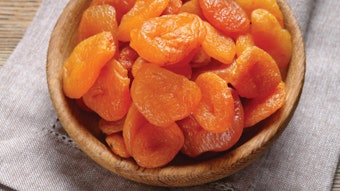
Flavors and fragrances exhibit a great many similarities, both in respect to the way they are created and in many of their ingredients. Despite these similarities, there are a few points of difference. One of the biggest is the fact that flavor chemists are more closely tied to nature, i.e., re-creating hints of known flavors, and less free to indulge in pure fantasy as perfumers do.
One of the most obvious effects of the greater freedom in perfumery is the dominant role played by musk chemicals in fragrances. The exotic and sensuous character of musk is highly attractive, and there are very few fragrances where it does not play an important part. Flavorists, guided by nature, tend to see musk as a peripheral ingredient at best. It may be seen as essential in blackberry and liqueur flavors, but in little else.
Perhaps flavorists should take a leaf from the perfumers’ creative book and look at a wider range of possible uses for this intriguing and uniquely attractive note. Ω-Pentadecalactone (FEMA #2840, CAS# 106-02-5) is, in this author’s opinion, the most effective musk in flavor compositions by far. The FEMA name Ω-pentadecalactone, however, is rarely used; this chemical is much better known by a number of trade names—most commonly Exaltolide.
It is found sparsely in nature, principally in angelica, but has an extremely pure musk odor. This can be a disadvantage at high levels in fragrances due to scent adaptation, but at the low levels used in flavors it is a distinct advantage. While musks are base notes in fragrances, they can serve to brighten and enhance flavors, often adding a subtly sensuous nuance.










